Structural Analysis of Electrochemical Hydrogen Compressor End-Plates for High-Pressure Applications
Abstract
:1. Introduction
- gaseous form in highly pressurized tanks (from 20 to 100 );
- liquid form in cryogenic tanks (at − 253 );
- cryo-compressed form (about 20 and at least 30 );
- solid form in metal hydrides or nanostructured materials (e.g., carbon or boron nitride nanotubes, nano-magnesium-based hydrides, complex hydride/carbon or polymer nanocomposites [7]).
2. Electrochemical Hydrogen Compressor
- ANODE: ;
- CATHODE: ;
- OVERALL REACTION: .
- MEA (Membrane Electrode Assembly), constituted by two (anodic and cathodic) electrodes, two (anodic and cathodic) catalyst layers, and a proton conductive membrane;
- bipolar plates, made of stainless steel. They contain the gas flow field;
- end-plates, made of stainless steel or carbon fiber composite;
- bolts. On the end-plates, they ensure the gas tightening of the system;
- gaskets.
3. Numerical Analysis
- in the first step, different geometries of the monopolar plate are compared to identify the best configuration;
- once the best geometric configuration had been evaluated, the second part of the study concerned the design of the plate.
- the space for the MEA (overall thickness of , hence per plate);
- the depth the flow-field channels would have had if represented ( );
- corresponding to the thickness of a metallic mesh to put over the low-pressure channels to better support the MEA during operation.
3.1. Part 1: Methodology
- configuration “a”;
- square side of plan view: 100 ;
- square side of active area: 50 .
3.2. Part 1: Results
3.3. Part 2: Methodology
- p is the pressure of 700 ;
- S is 2507 active area;
- n is the number of bolts;
- is a safety factor of 3;
- is the yield stress of the bolt material.
- central node displacements in XY plane;
- displacement of a y-axis point along the x-axis;
- displacement of an x-axis point along the y-axis.
3.4. Part 2: Results
- at the center of the plate (about 250 ) due to the high pressure applied orthogonally to the surface;
- in the contact areas (the automatic full-scale value, not represented in Figure 8, is ).
4. Conclusions and Future Work
Author Contributions
Funding
Conflicts of Interest
References
- Niaz, S.; Manzoor, T.; Pandith, A. Hydrogen storage: Materials, methods and perspectives. Renew. Sustain. Energy Rev. 2015, 50, 457–469. [Google Scholar] [CrossRef]
- Durbin, D.; Malardier-Jugroot, C. Review of hydrogen storage techniques for on board vehicle applications. Int. J. Hydrogen Energy 2013, 38, 14595–14617. [Google Scholar] [CrossRef]
- Casati, C.; Longhi, P.; Zanderighi, L.; Bianchi, F. Some fundamental aspects in electrochemical hydrogen purification/compression. J. Power Sources 2008, 180, 103–113. [Google Scholar] [CrossRef]
- Barthelemy, H.; Weber, M.; Barbier, F. Hydrogen storage: Recent improvements and industrial perspectives. Int. J. Hydrogen Energy 2017, 42, 7254–7262. [Google Scholar] [CrossRef]
- Seayad, A.; Antonelli, D. Recent Advanced in Hydrogen Storage in Metal-Containing Inorganic Nanostructures and Related Materials. Adv. Mater. 2004, 16, 765–777. [Google Scholar] [CrossRef]
- Rusman, N.; Dahari, M. A review on the current progress of metal hydrides material for solid-state hydrogen storage applications. Int. J. Hydrogen Energy 2016, 41, 12108–12126. [Google Scholar] [CrossRef]
- Niemann, M.U.; Srinivasan, S.S.; Phani, A.R.; Kumar, A.; Goswami, D.Y.; Stefanakos, E.K. Nanomaterials for Hydrogen Storage Applications: A Review. J. Nanomater. 2008, 2008, 950967. [Google Scholar] [CrossRef] [Green Version]
- Hua, T.; Ahluwalia, R.; Peng, J.; Kromer, M.; Lasher, S.; McKenney, K.; Law, K.; Sinha, J. Technical assessment of compressed hydrogen storage tank systems for automotive applications. Int. J. Hydrogen Energy 2011, 36, 3037–3049. [Google Scholar] [CrossRef] [Green Version]
- Ahluwalia, R.; Hua, T.; Peng, J. On-board and Off-board performance of hydrogen storage options for light-duty vehicles. Int. J. Hydrogen Energy 2012, 37, 2891–2910. [Google Scholar] [CrossRef]
- Bouwman, P. Electrochemical Hydrogen Compression (EHC) solutions for hydrogen infrastructure. Fuel Cells Bull. 2014, 2014, 12–16. [Google Scholar] [CrossRef]
- Miguel, N.; Cebolla, R.O.; Acosta, B.; Moretto, P.; Harskamp, F.; Bonato, C. Compressed hydrogen tanks for on-board application: Thermal behaviour during cycling. Int. J. Hydrogen Energy 2015, 33, 6449–6458. [Google Scholar] [CrossRef]
- Eliezer, D. The Behavior of 316 Stainless Steel in Hydrogen. J. Mater. Sci. 1984, 19, 1540. [Google Scholar] [CrossRef]
- Zhou, X.; Tehranchi, A.; Curtin, W.A. Mechanism and Prediction of Hydrogen Embrittlement in fcc Stainless Steels and High Entropy Alloys. Phys. Rev. Lett. 2021, 127, 175501. [Google Scholar] [CrossRef] [PubMed]
- Ogata, T. Influence of high pressure hydrogen environment on tensile and fatigue properties of stainless steels at low temperatures. AIP Conf. Proc. 2012, 1435, 39–46. [Google Scholar] [CrossRef] [Green Version]
- Omura, T.; Nakamura, J. Hydrogen Embrittlement Properties of Stainless and Low Alloy Steels in High Pressure Gaseous Hydrogen Environment. ISIJ Int. 2012, 52, 234–239. [Google Scholar] [CrossRef] [Green Version]
- Suermann, M.; Kiupel, T.; Schmidt, T.J.; Büchi, F.N. Electrochemical Hydrogen Compression: Efficient Pressurization Concept Derived from an Energetic Evaluation. J. Electrochem. Soc. 2017, 164, F1187–F1195. [Google Scholar] [CrossRef]
- Besancon, B.M.; Hasanov, V.; Imbault-Lastapis, R.; Benesch, R.; Barrio, M.; Mølnvik, M.J. Hydrogen quality from decarbonized fossil fuels to fuel cells. Int. J. Hydrogen Energy 2009, 34, 2350–2360. [Google Scholar] [CrossRef]
- Strobel, R.; Oszcipok, M.; Fasil, M.; Rohland, B.; Jorissen, L.; Garche, J. The compression of hydrogen in an electrochemical cell based on a PE Fuel Cell design. J. Power Sources 2002, 105, 208–215. [Google Scholar] [CrossRef]
- Zou, J.; Han, N.; Yan, J.; Feng, Q.; Wang, Y.; Zhao, Z.; Fan, J.; Zeng, L.; Li, H.; Wang, H. Electrochemical Compression Technologies for High-Pressure Hydrogen: Current Status, Challenges and Perspective. Electrochem. Energy Rev. 2020, 3, 690–729. [Google Scholar] [CrossRef]
- Matera, F.; Gatto, I.; Saccà, A.; Carbone, A.; Pedicini, R. Performance assessment of alternative membranes for Electrochemical Hydrogen Compressor (EHC) in portable PEM fuel cell applications. In Proceedings of the European Hydrogen Energy Conference, Malaga, Spain, 14–16 March 2018. [Google Scholar]
- Rohland, B.; Eberle, K.; Strobel, R.; Scholta, J.; Garche, J. Electrochemical hydrogen compressor. Electrochim. Acta 1998, 43, 3841–3846. [Google Scholar] [CrossRef]
- Arvay, A. Proton Exchange Membrane Fuel Cell Modeling and Simulation Using Ansys Fluent; Arizona State University: Tempe, AZ, USA, 2011. [Google Scholar]
- Baker, J.; Hwang, Y.; Wang, C. Design of Gas Channels for a Carbon Dioxide Electrochemical Compressor. In Proceedings of the International Compressor Engineering Conference, West Lafayette, IN, USA, 9–12 July 2018; p. 2616. [Google Scholar]
- Grigoriev, S.; Shtatniy, I.; Millet, P.; Porembsky, V.; Fateev, V. Description and characterization of an electrochemical hydrogen compressor/concentrator based on solid polymer electrolyte technology. Int. J. Hydrogen Energy 2011, 36, 4148–4155. [Google Scholar] [CrossRef]
- Bampaou, M.; Panopoulos, K.; Papadopoulos, A.; Seferlis, P.; Voutetakis, S. An Electrochemical Hydrogen Compression Model. Ital. Assoc. Chem. Eng. 2018, 70, 1213–1218. [Google Scholar]
- Grigoriev, S.; Djous, K.; Millet, P.; Kalinnikov, A.; Porembskiy, V.; Fateev, V.; Blach, R. Characterization of PEM Electrochemical Hydrogen Compressors; Kurchatov Institute: Moscow, Russia, 2008. [Google Scholar]
- Available online: https://www.acciaiterni.it/wp-content/uploads/2017/07/316_NEW.pdf (accessed on 30 May 2022).
- Available online: http://www.ambrogiocolombo.it/prodotto/inox-aisi-316/ (accessed on 30 May 2022).
- Available online: https://www.gruppolimainox.it/index.php/attivita/114-pages/acciai-inossidabili/designazione/317-aisi-316 (accessed on 31 May 2022).
- Available online: https://www.efunda.com/Materials/alloys/stainless_steels/show_stainless.cfm?ID=AISI_Type_316&prop=all&Page_Title=AISI%20Type%20316 (accessed on 31 May 2022).
- Mirone, G. Role of stress triaxiality in elastoplastic characterization and ductile failure prediction. Eng. Fract. Mech. 2007, 74, 1203–1221. [Google Scholar] [CrossRef]
- Peng, J.; Wang, Y.; Dai, Q.; Liu, X.; Liu, L.; Zhang, Z. Effect of Stress Triaxiality on Plastic Damage Evolution and Failure Mode for 316L Notched Specimen. Metals 2019, 9, 1067. [Google Scholar] [CrossRef] [Green Version]
- Giovannozzi, R. Costruzione di Macchine; Pàtron: San Francisco, CA, USA, 1980; Volume 1. [Google Scholar]
- Righettini, P. Available online: https://docplayer.it/57127739-Progettazione-funzionale-di-sistemi-meccanici-e-meccatronici-camme-pressioni-di-contatto.html (accessed on 19 January 2022).
- Available online: https://web.archive.org/web/20210301070357/http://mechdesigner.support/index.htm?contact-fatigue-cams-cam-followers.htm (accessed on 19 January 2022).

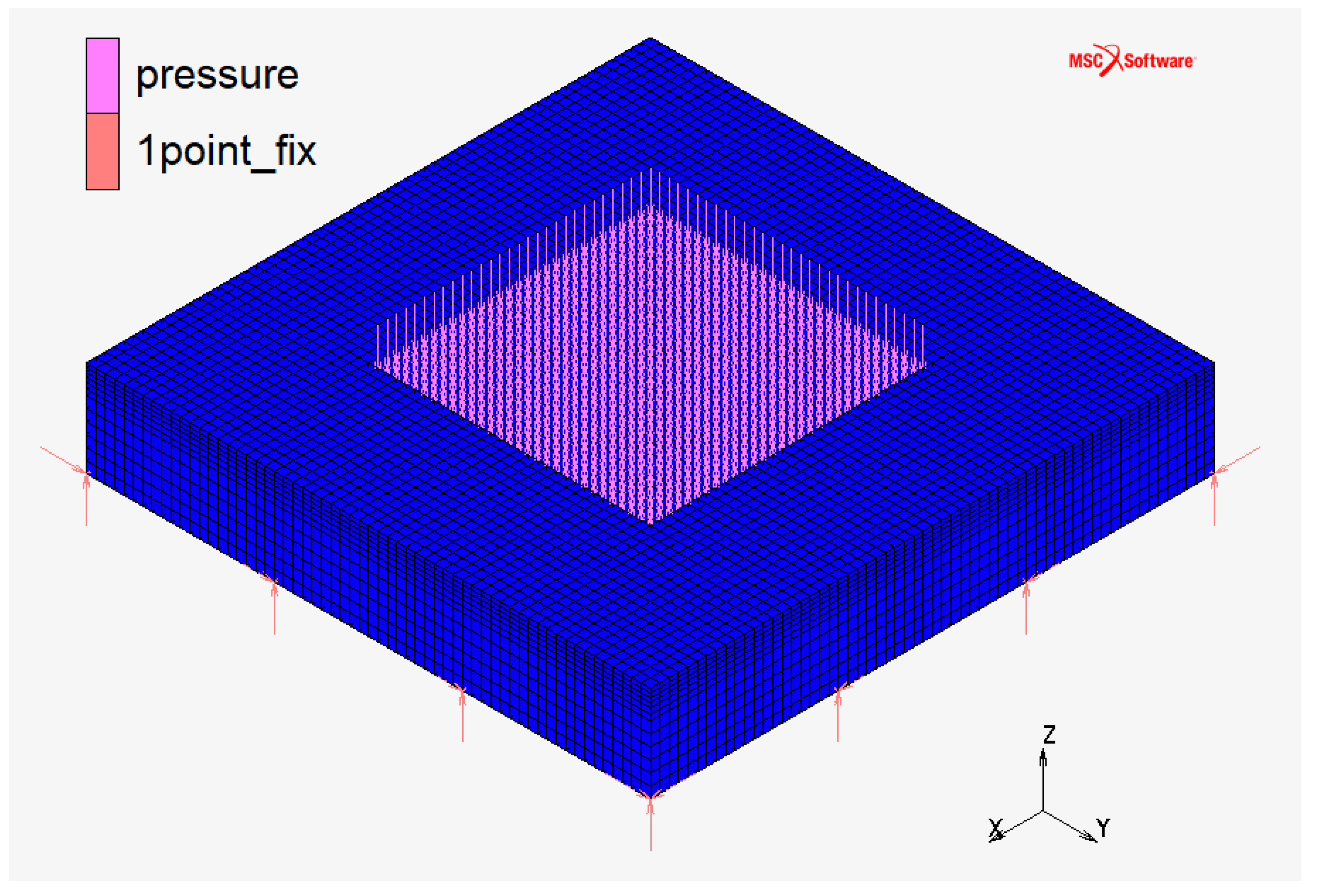
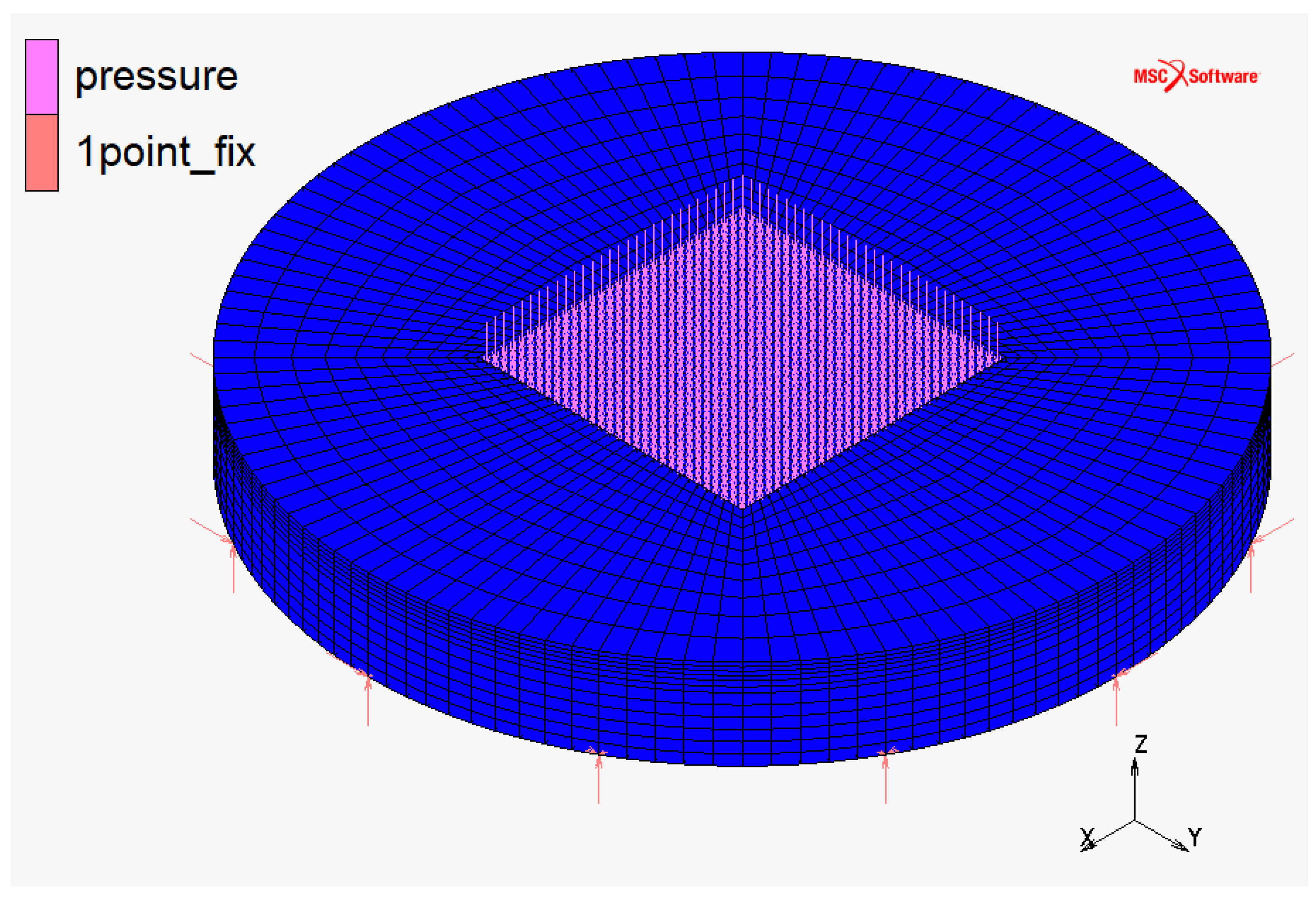

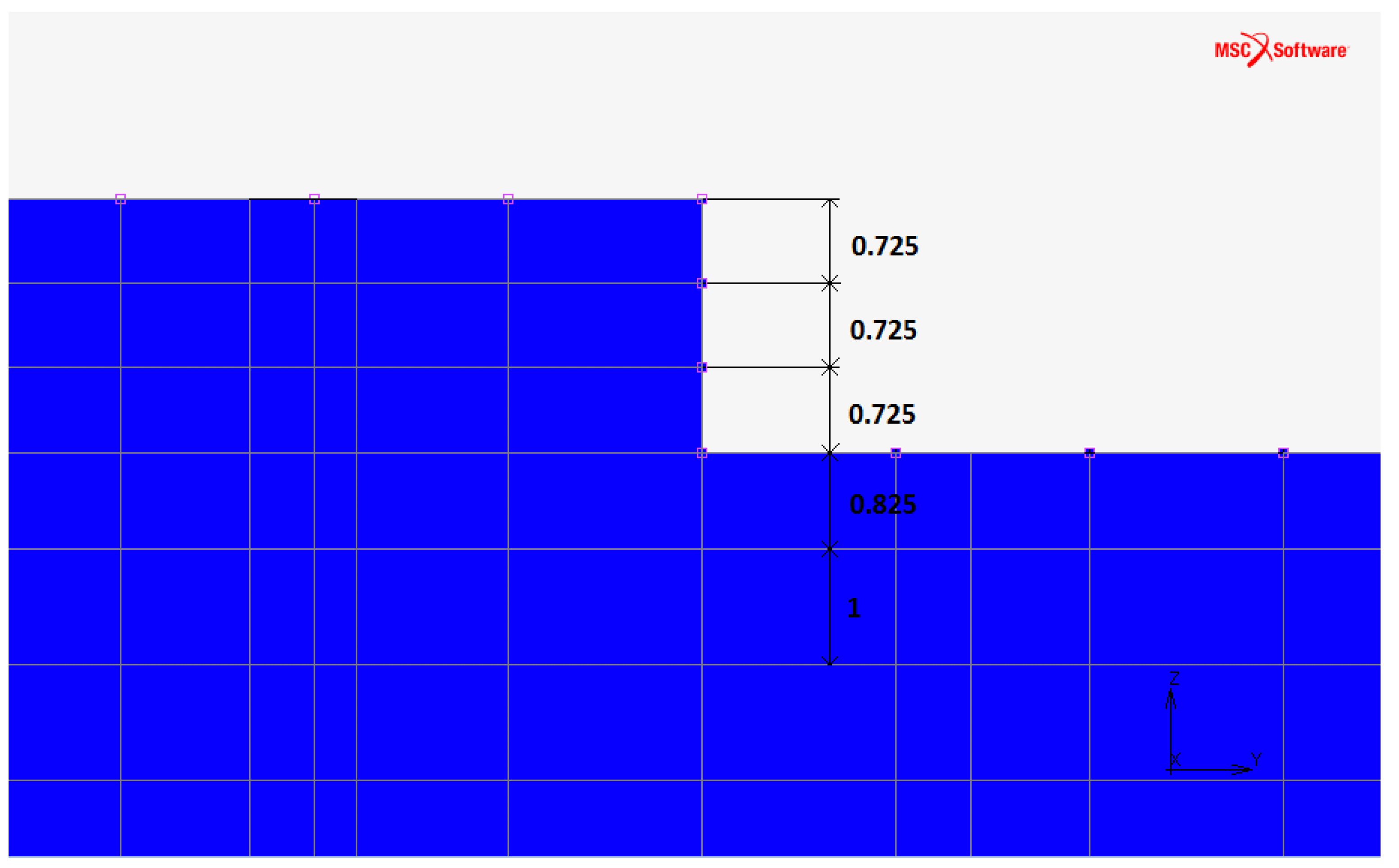
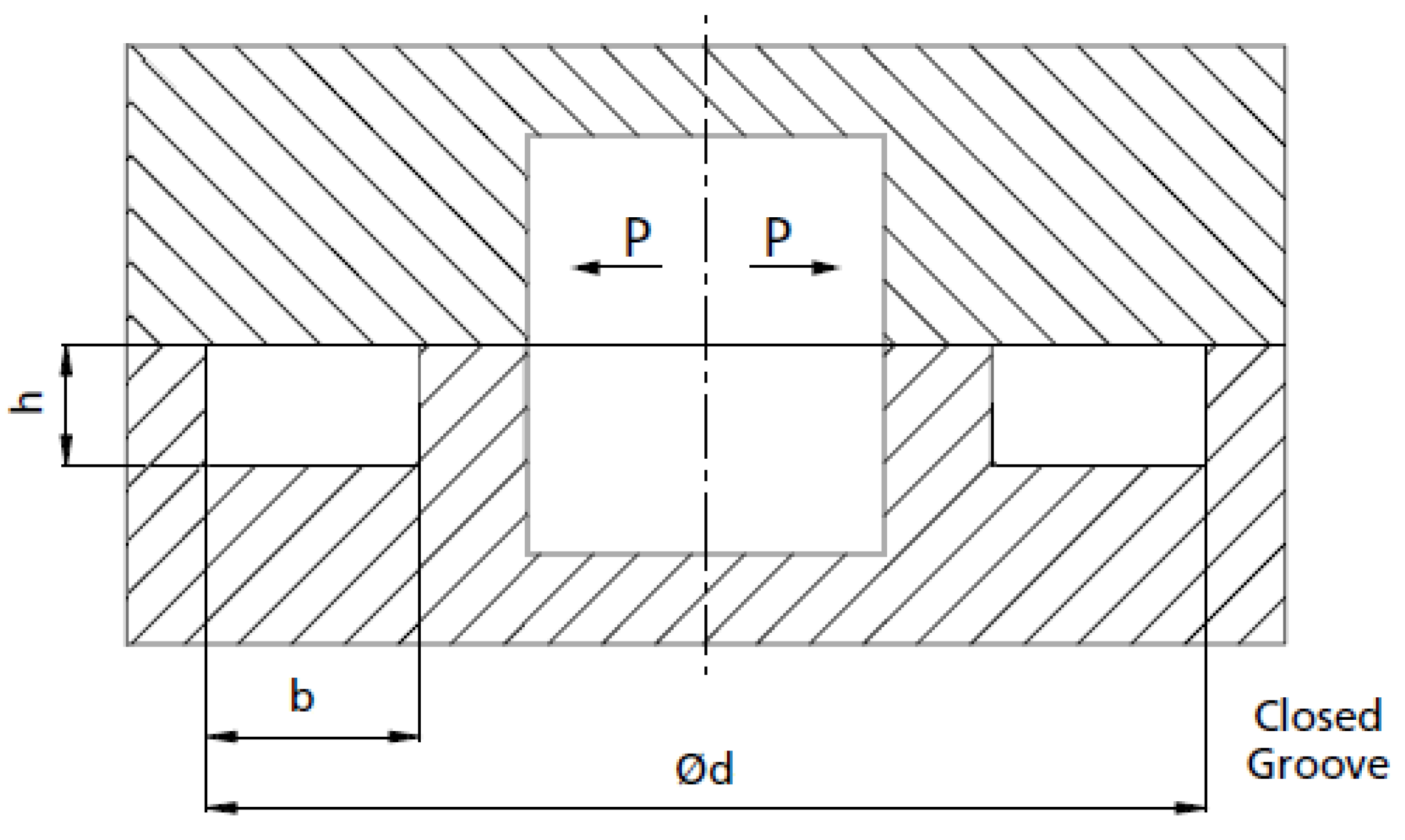

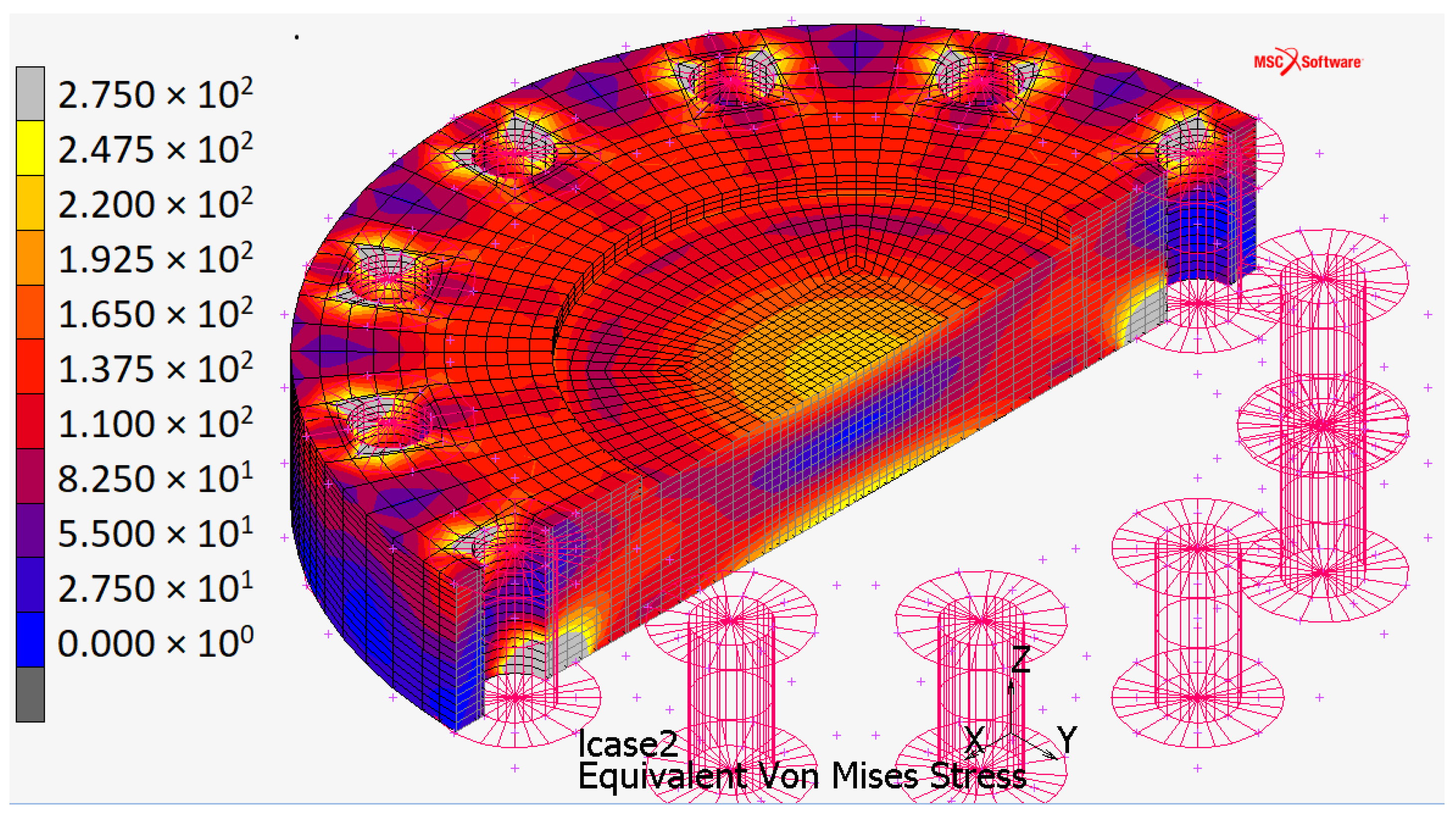
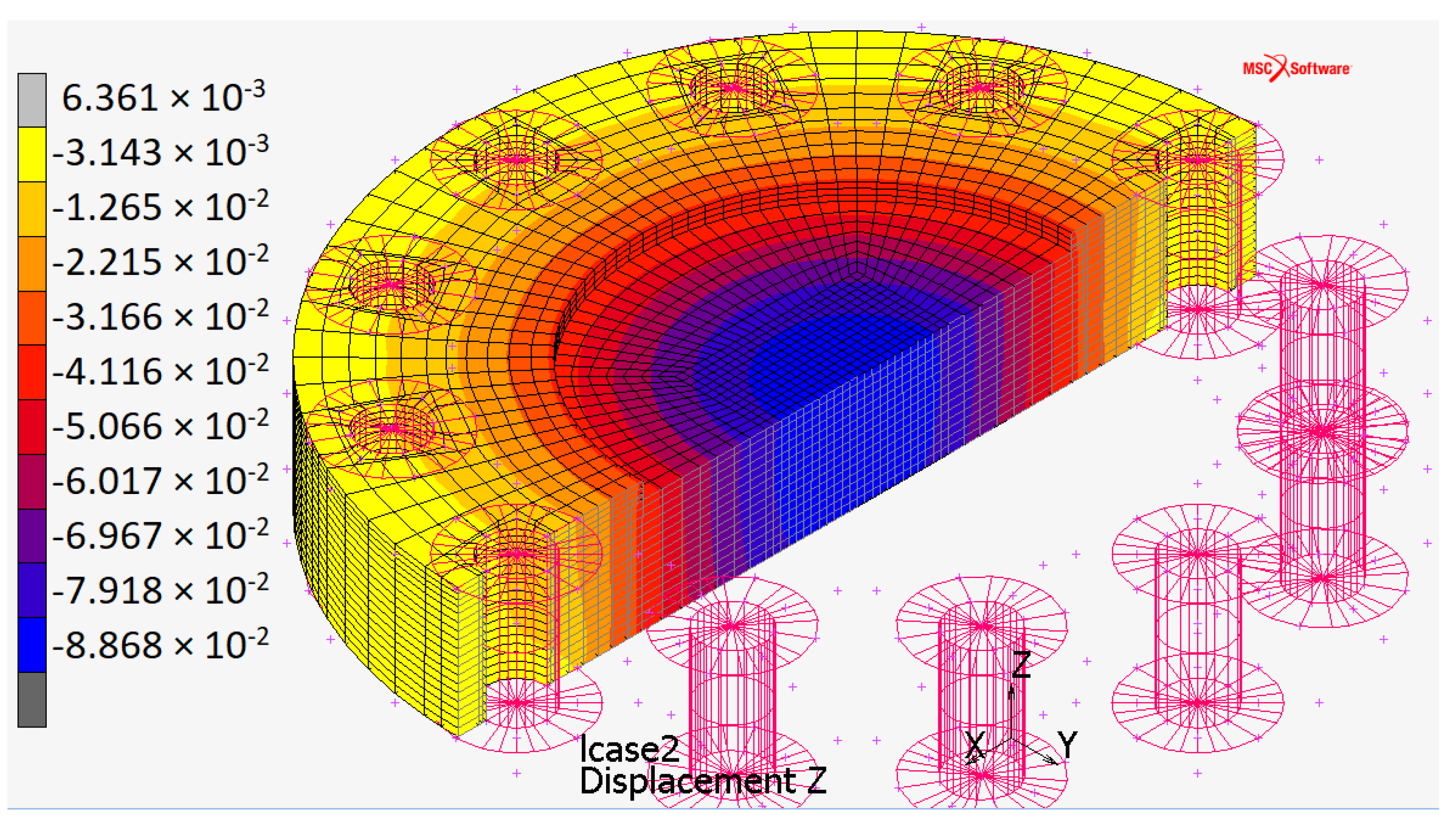
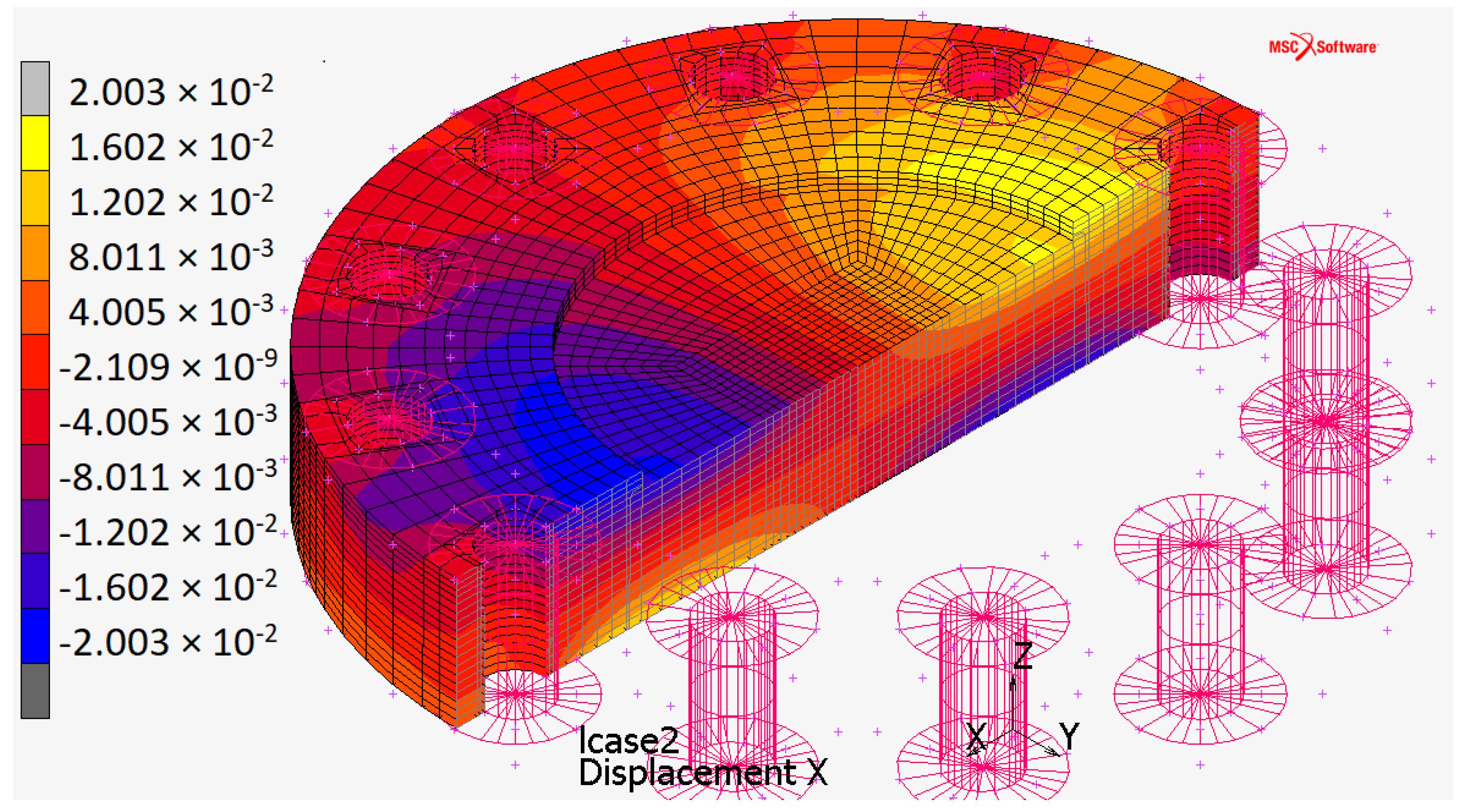

| Values | E [GPa] | [-] | [MPa] | [MPa] | |
|---|---|---|---|---|---|
| Typical | 193–200 | 0.27–0.3 | 200–300 | 500–700 | 215 |
| Used | 200 | 0.3 | 200 | 500 | 215 |
| Conf. a | Conf. b | Conf. c | |
|---|---|---|---|
| 100 | 141.42 | 141.42 | |
| 50 | 50 | 56.5 | |
| 2500 | 2500 | 2507 | |
| t | 30 | 30 | 30 |
| 2.175 | 2.175 | 2.175 |
| Conf. a | Conf. b | Conf. c | |
|---|---|---|---|
| [] | − 0.2081 | − 0.1333 | − 0.1374 |
| [%] | 0.079 | 0.16 | 0.079 |
| [] | 180 | 340 | 145 |
Publisher’s Note: MDPI stays neutral with regard to jurisdictional claims in published maps and institutional affiliations. |
© 2022 by the authors. Licensee MDPI, Basel, Switzerland. This article is an open access article distributed under the terms and conditions of the Creative Commons Attribution (CC BY) license (https://creativecommons.org/licenses/by/4.0/).
Share and Cite
Caponetto, R.; Privitera, E.; Mirone, G.; Matera, F. Structural Analysis of Electrochemical Hydrogen Compressor End-Plates for High-Pressure Applications. Energies 2022, 15, 5823. https://doi.org/10.3390/en15165823
Caponetto R, Privitera E, Mirone G, Matera F. Structural Analysis of Electrochemical Hydrogen Compressor End-Plates for High-Pressure Applications. Energies. 2022; 15(16):5823. https://doi.org/10.3390/en15165823
Chicago/Turabian StyleCaponetto, Riccardo, Emanuela Privitera, Giuseppe Mirone, and Fabio Matera. 2022. "Structural Analysis of Electrochemical Hydrogen Compressor End-Plates for High-Pressure Applications" Energies 15, no. 16: 5823. https://doi.org/10.3390/en15165823
APA StyleCaponetto, R., Privitera, E., Mirone, G., & Matera, F. (2022). Structural Analysis of Electrochemical Hydrogen Compressor End-Plates for High-Pressure Applications. Energies, 15(16), 5823. https://doi.org/10.3390/en15165823






